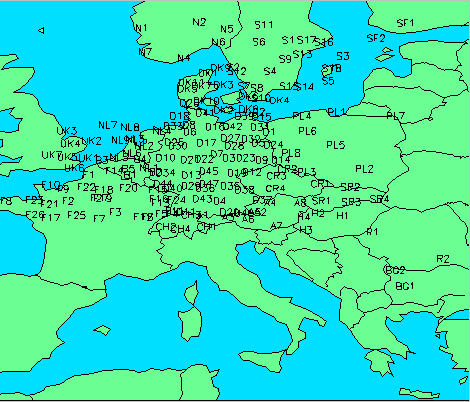
An important question related to the sampling network was how samplers should be geographically distributed and which organisation should host and operate the network for the experiment.
Initially, the proposal was to place samplers at 0.5° to 1° intervals of latitude and longitude across Europe. However, the problem was that these samplers needed to be located at secure sites with electrical supplies, communication systems, operational round the clock 7 days a week, and operated by personnel with a scientific background. The cost and effort of establishing such a network from scratch would have been totally prohibitive.
It was then decided to turn to the existing WMO meteorological observing stations network. These stations are operated and owned by the various national Meteorological Services although they are linked into WMO. This network, fairly homogeneously distributed over the selected domain, routinely collects weather data for numerical weather prediction purposes, as well as for climatological and other purposes.
A final number of 168 sampling stations was selected, almost all located at existing WMO stations. Three samplers were located in the North Sea: one on a Dutch oil platform, the other two on gas platforms. The average spacing between two sampling stations in the resulting configuration was about 80 km.
Each station was labelled with one or two letters identifying the Country where it was located, and numbered sequentially.

It was planned to start the sampling operations at each station about 6 hours before the expected time of tracer arrival to obtain a contemporaneous measurement of the tracer background levels and to ensure the arrival was not missed. Each station was designed to sample over a period of 72 consecutive hours (24 three-hour samples), with sampling starting time progressively delayed from West to East. The stations closest to the source started sampling 3 hours before the release start; the most distant stations ended sampling 90 hours after the release start. Overall some 9000 samples were successfully collected in the two experiments.
More on: Release duration